The Kids are All Bright
At Emory, serious research is not just for faculty and grad students. Meet a few undergraduates who couldn't wait to get started

Photos by Kay Hinton
Jessica Elinburg 15C, chemistry major
Faculty Adviser: Cora MacBeth, assistant dean of student affairs, Laney Graduate School
Research
Synthetic inorganic chemistry; sponsor: National Science Foundation Center for Selection C-H Functionalization and Clare Boothe Luce Fellowship grant, and Scholarly Inquiry and Research at Emory (SIRE)
Reason
Entering Emory, joining a research laboratory was a definite goal of mine. I've always loved science, and after interning in the medical field in high school, I knew medicine was not the path for me. Naturally, I began to think about other scientific career options and began considering research. Once I joined the MacBeth group, I was instantly hooked!
Results
My research involves synthesizing new types of catalysts to activate carbon-hydrogen bonds. These catalysts integrate abundant earth metals such as zinc, cobalt, and iron, instead of the highly expensive, rare metals that current catalysts use (such as palladium, rhodium, iridium). Hopefully, the catalysts we make will not only be efficient, but also significantly less expensive and more environmentally friendly than those currently used.
Rewards
I love the problem-solving aspect of research. For example, when a reaction yields unexpected results, there are so many tools you can utilize to figure out what happened. Using these tools to find an answer can be an exhausting, but rewarding, process. It's literally a chemical treasure hunt! This summer, I was fortunate to continue my research project through a generous grant from the National Science Foundation's Center for Selection C-H Functionalization and the Clare Boothe Luce Fellowship.
Real Life
This summer, I spent ten weeks with the Borovik Group at the University of California, Irvine, utilizing specialized technology in their lab to gain essential information about the catalysts I've made here at Emory. I made great friends with my fellow lab members and learned so much about characterizing chemical compounds.
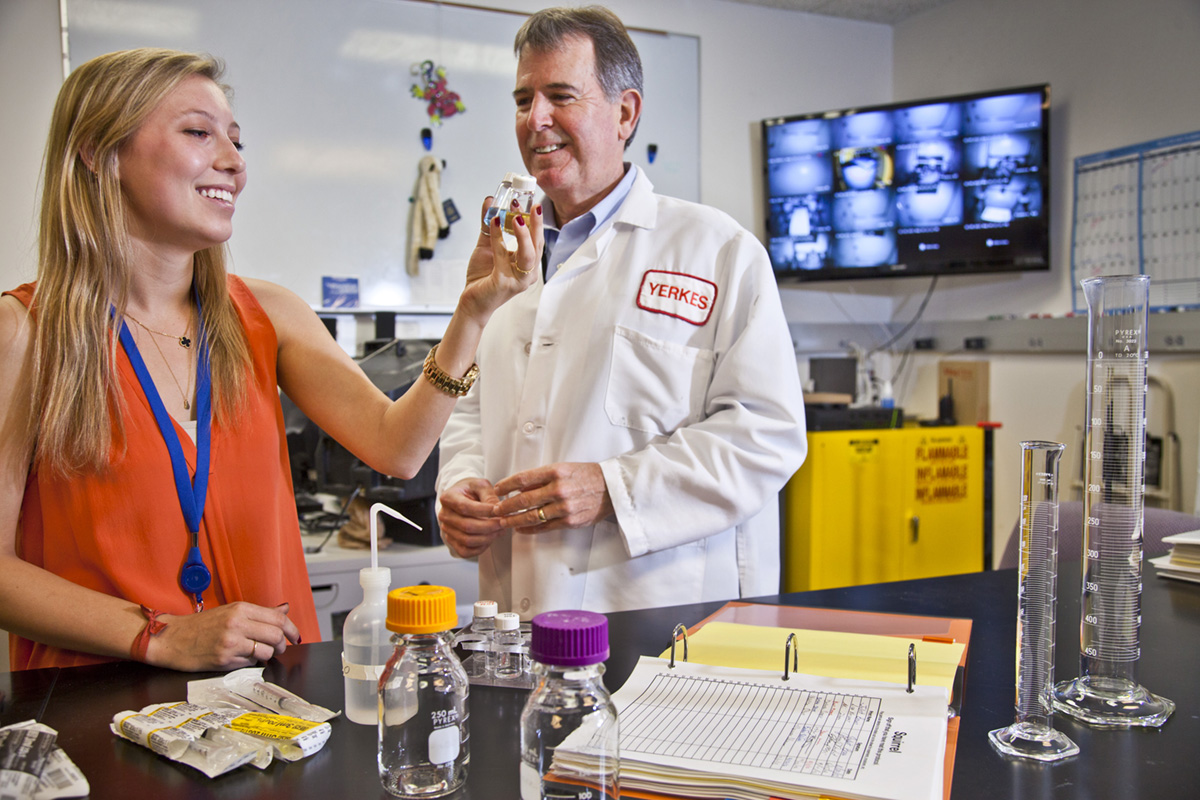
Logun with Howell
Meghan Logun 14C, biology major
Faculty Adviser: Leonard Howell, chief, Division of Neuropharmacology and Neurologic Diseases, Yerkes National Primate Research Center; professor of psychiatry and behavioral sciences
Research
The behavioral pharmacology of MDMA ("ecstasy")
Reason
I had really enjoyed all of the lab classes I had taken at Emory so I thought that I would enjoy helping in research. I was drawn to Yerkes specifically because of the opportunity to work with laboratory animals, and one of my friends who was working here at the time said nothing but great things about her experience.
Results
We are looking at how different doses of MDMA change social behavior in squirrel monkeys. MDMA is a popular recreational drug, and there is still so much that we have to learn about how it changes brain chemistry and behavior. My hope for this project would be that it contributes to our knowledge of the neurochemical mechanisms of MDMA that cause changes in behavior, and ultimately one day contributes to helping create therapeutic options for abusers of stimulants.
Rewards
My favorite part would be working with the squirrel monkeys, because they have really interesting behaviors and personalities. Working with the nonhuman primates in a renowned research facility through Emory is an amazing experience that I don't think many undergraduate students get the chance to do.
Real Life
Working with the squirrel monkeys has been memorable in itself, but I cannot forget my first time walking into the colony to meet them. The monkeys were all riled up because they knew that someone new was in the room, but that was when I learned the power of keeping treats in your pockets. They quiet right down when there is sugar up for grabs!
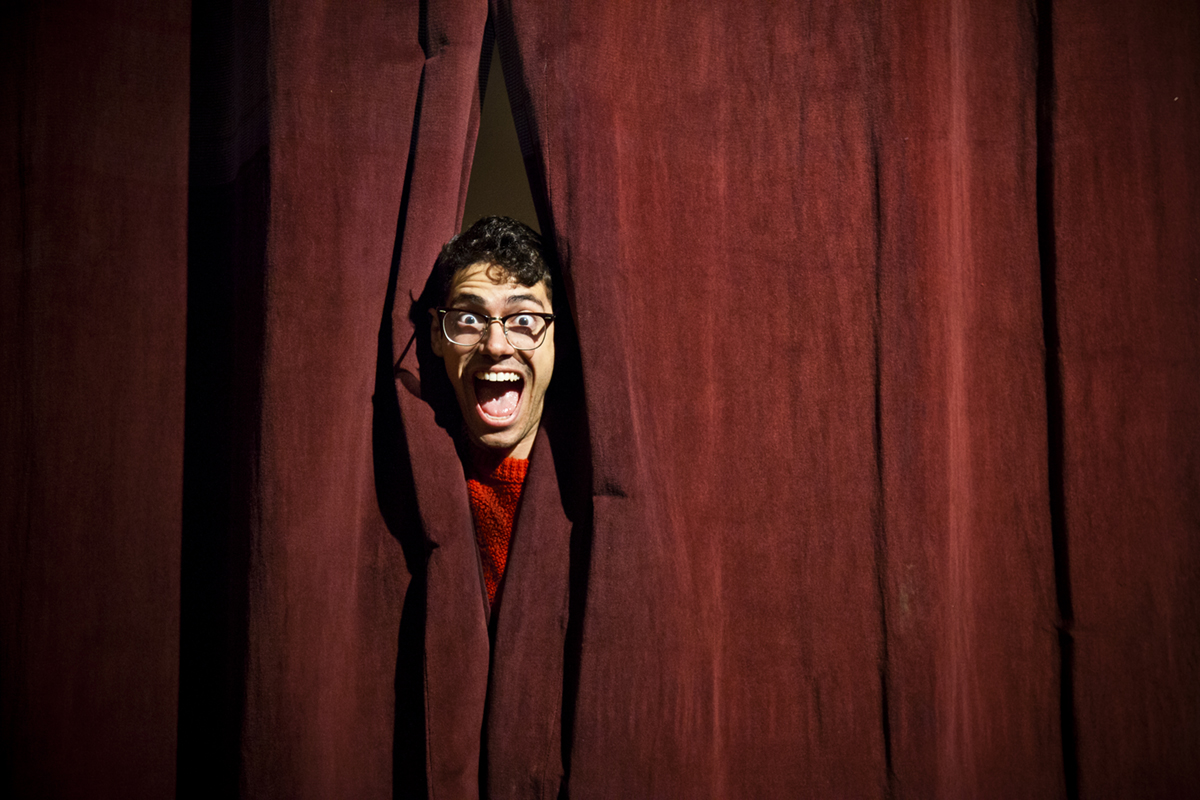
Jake Krakovsky 14c, theater studies major
Faculty Adviser: Tim McDonough, chair, Department of Theater Studies; professor of theater and dance
Research
Theater production, dramaturgy, acting, directing, marketing, management, and design on an independent production of Samuel Beckett's Waiting for Godot; sponsor: SIRE
Reason
I wanted to participate in undergraduate research at Emory to evocatively demonstrate that the research done in the arts is valid, valuable, and as deserving of support as "traditional" academic research.
Results
This summer, Seth Langer 11C, my primary collaborator, and I independently produced Samuel Beckett's Waiting for Godot in Atlanta. My collaborators and I wanted to know: can a group of young artists, working on a shoestring budget, not housed by an established name or company, successfully produce a work of theater and reach a community. Seth and I codirected, coproduced, and designed, working with half a dozen fellow artists. Our goal was to create a work that was shaped and framed in every element by a cohesive, interconnected aesthetic and methodological consistency. This project was successful, and that success indicates that we have only just begun. More than three hundred people attended our six performances, diverse audiences consisting of college students and professors, local artists, and Atlantans of various ages and social spheres. Thus begins the great experiment of discovering new forms, creating new production methodologies, and ushering forth new conceptions of how theater can be made in the twenty-first century.
Rewards
The most satisfying part of this research was experiencing the fruition of an art project so long in the making, and sharing it with our friends, family, and community. I owe an immeasurable debt of gratitude to the Department of Theater Studies. This project began as a class assignment that Seth and I worked on together for Tim McDonough's Developing a Role course in spring 2011. We developed the piece further in Theater Emory's summer Breaking Ground series. SIRE provided me with the support I needed to fully realize the project this past summer.
Rewards
Countless flashes of that sudden, shocking realization—oh wow, this is really going to happen! Every time a design solution was discovered, a marketing connection came through, an actor had a performance epiphany—those fleeting flashes of satisfaction and recognition keep you going.
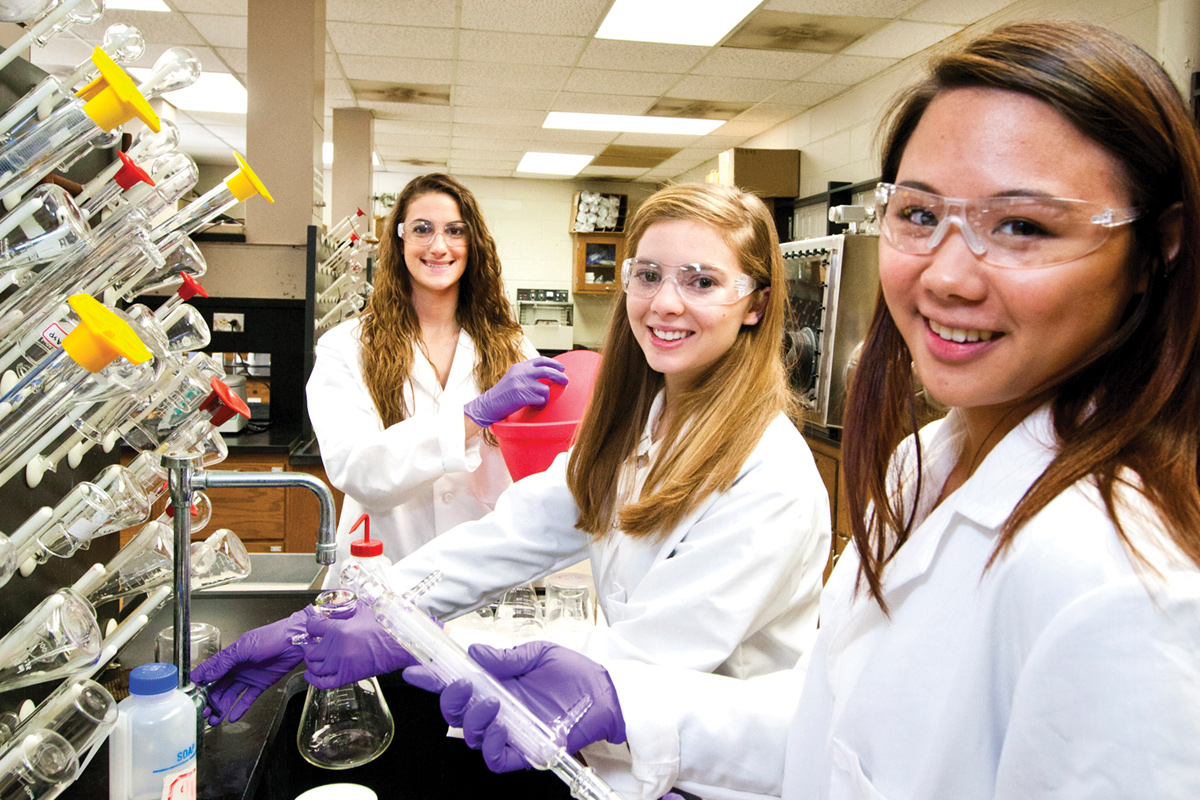
Casey Anthony 14OX, Katharine Roland 14OX, and Asumi Suguro 14OX; chemistry majors
Faculty Adviser: Nichole Powell, assistant professor of chemistry, Oxford College
Research
Chalcones/chalcone derivatives and their pharmacological effects
Reason
I wanted to take advantage of the unique research opportunities Oxford has for its undergraduate students, and to build the intellectual curiosity and skill needed for success in scientific research—as well as to begin to apply classroom concepts in a laboratory setting as I will after my undergraduate career. (CA)
Results
The goal of our research is to synthesize chalcones and chalcone derivatives, which will then be examined for their anti-cancer properties. We hope to correctly synthesize the chalcones and improve our technique in order to obtain greater yields. (KR)
Rewards
This research gave me the chance to practice lab techniques I learned from other classes. Because of the research, not only has my technique greatly improved, but my passion for chemistry and research has been enhanced, too. (AS) I made two great friends, and we were able to help each other and exchange ideas. Having the opportunity to conduct research has allowed me to learn that chemistry is my niche and explore what the field has to offer. (KR) Building a connection with a professor in my field of study is incredibly beneficial for networking and research-related advice, but I also have a close mentor who often serves as a source of inspiration for innovation, discovery, and motivation in the research field. (CA)
Real Life
A memorable moment is the first time Casey, Angela, and I first tried to synthesize a chalcone. We did not succeed at first, but we learned from our mistakes. Moreover, that day is when we really bonded and developed a friendship. (KR)

Hannah Chen 14C, chemistry and economics double major
Faculty Adviser: Stefan Lutz, associate professor of chemistry
Research
Biochemistry study focused on protein engineering with therapeutic applications; sponsors: International Research Experience for Science Students (IRES), Summer Undergraduate Research Experience (SURE), and SIRE
Reason
I've always had an aptitude for science and an interest in applying what I learned in the classroom to real-world applications. This is why before I even arrived at Emory as a freshman, I had already contacted professors with whom I was interested in conducting research. Research was one of the first extracurriculars I became involved with at Emory, and it has remained a consistent theme since I first stepped into the Lutz lab within the first week of beginning my college experience.
Results
My research in Dr. Lutz's laboratory has focused on protein engineering with therapeutic applications. Currently, we are interested in designing kinases to selectively activate positron emission tomography (PET) imaging probes to serve as reporter genes in the promising field of gene therapy. We hope to engineer the substrate specificity of human deoxycytidine kinase to serve as a reporter gene and as an imaging agent in PET imaging.
Rewards
Research has been one of the defining activities of my time at Emory so far. My favorite part of my research experience is just seeing how much I've grown. I've not only gained knowledge about protein structure and how to manipulate enzymatic function, but I've also improved valuable skills such as critical thinking and problem solving. I am more confident in my skills and better at effectively communicating science to a broader audience. My laboratory environment; research mentors; and Emory's research programs including SURE, SIRE, and IRES have definitely helped foster that intellectual growth by challenging me to improve and practice my communication skills.
Real Life
My interest in research brought me to Munich, Germany, this past summer through the IRES program at Emory and the DAAD-RISE German academic exchange program. I worked at the University of Munich for ten weeks examining the thermostability of therapeutic monoclonal antibodies. This was an incredible experience that threw me into a completely different research environment where I learned many new protein analytical techniques, made wonderful friends, explored German culture, and connected with many diverse people throughout Europe. The PhD and master's students in the lab were so welcoming and introduced me to new laboratory techniques and German cultural traditions. It was definitely an unforgettable summer!
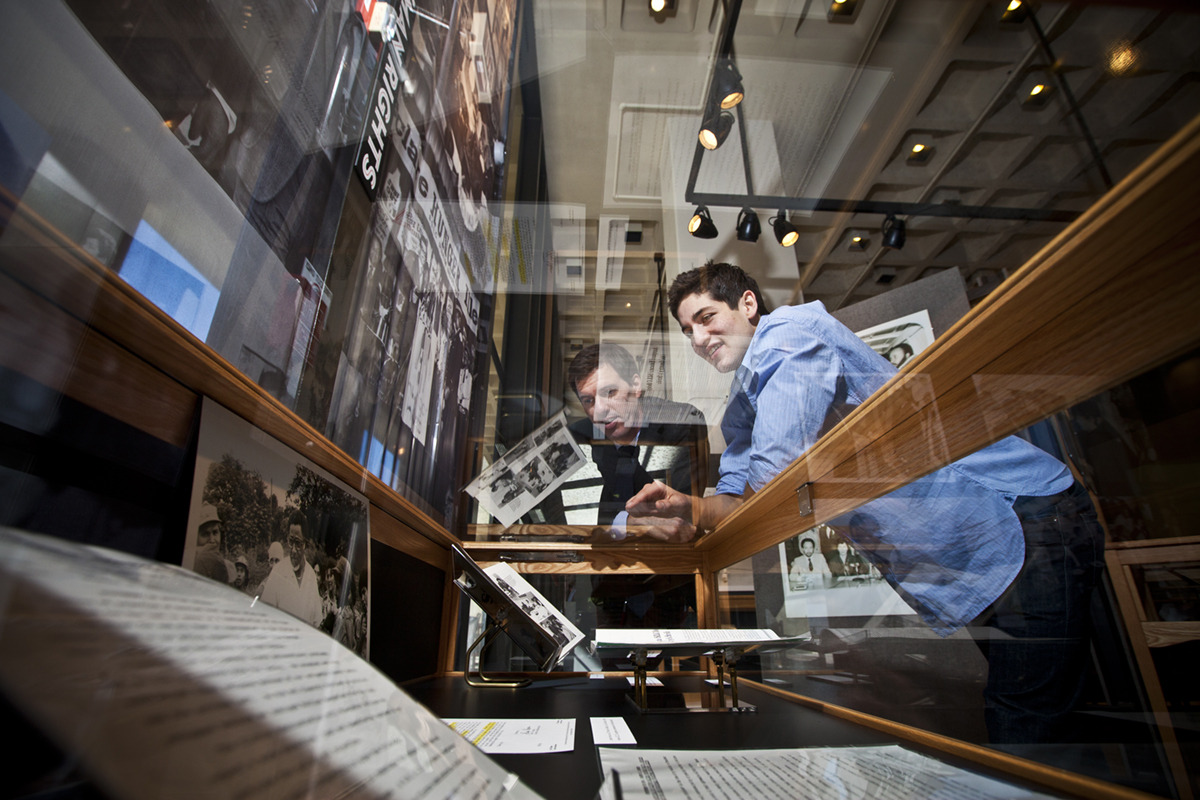
Nathaniel Meyersohn 15C, US history major
Faculty Adviser: Joseph Crespino, professor of history
Research
Religion and race in twentieth-century Atlanta; sponsor: SIRE summer program (now serves as a peer mentor)
Reason
I was excited to serve as Professor Crespino's undergraduate research assistant for many reasons. I was very interested in the civil rights movement, and the research allowed me to study the period and explore Atlanta's tumultuous civil rights struggle. Working for Professor Crespino also helped me gain a better understanding of how historians conduct their research and arrive at conclusions, tools that will benefit me when I begin my own honors thesis. Finally, I took Professor Crespino's course on Reconstruction and the civil rights movement, as well as his class on the 1960s, and the research has given me the opportunity to continue working closely with him.
Results
Professor Crespino asked me to comb through the archives of the Atlanta Constitution to help his understanding of leading white and black ministers' influence on the city's racial and religious crisis. My research has provided him with valuable examples of white pastors' struggles to confront racial issues, and black ministers' crucial leadership roles in the fight for equality. White religious leaders wrestled with their moral conscience over segregation, and they often faced criticism for their reluctance to challenge Jim Crow laws and attitudes. The Constitution also gave prominence to local black pastors' role in Atlanta's civil rights struggle. Internal disagreements within the movement arose, especially among older and younger black leaders, and the newspaper often reported contention between the two groups.
Rewards
My favorite part of the research has been working in close consultation with Professor Crespino, who is a remarkable mentor and teacher.
Real Life
One day, I came across an article about a contingent of Northern ministers who marched with Dr. King and his Southern Christian Leadership Conference in the 1961 Albany Movement. Albany Police Chief Laurie Pritchett arrested the ministers for disturbing the peace, including a pastor from New York City named Rev. Norman Eddy. I'm a close friend of the late Rev. Eddy's daughter, Martha, and I was thrilled to share my findings with her.
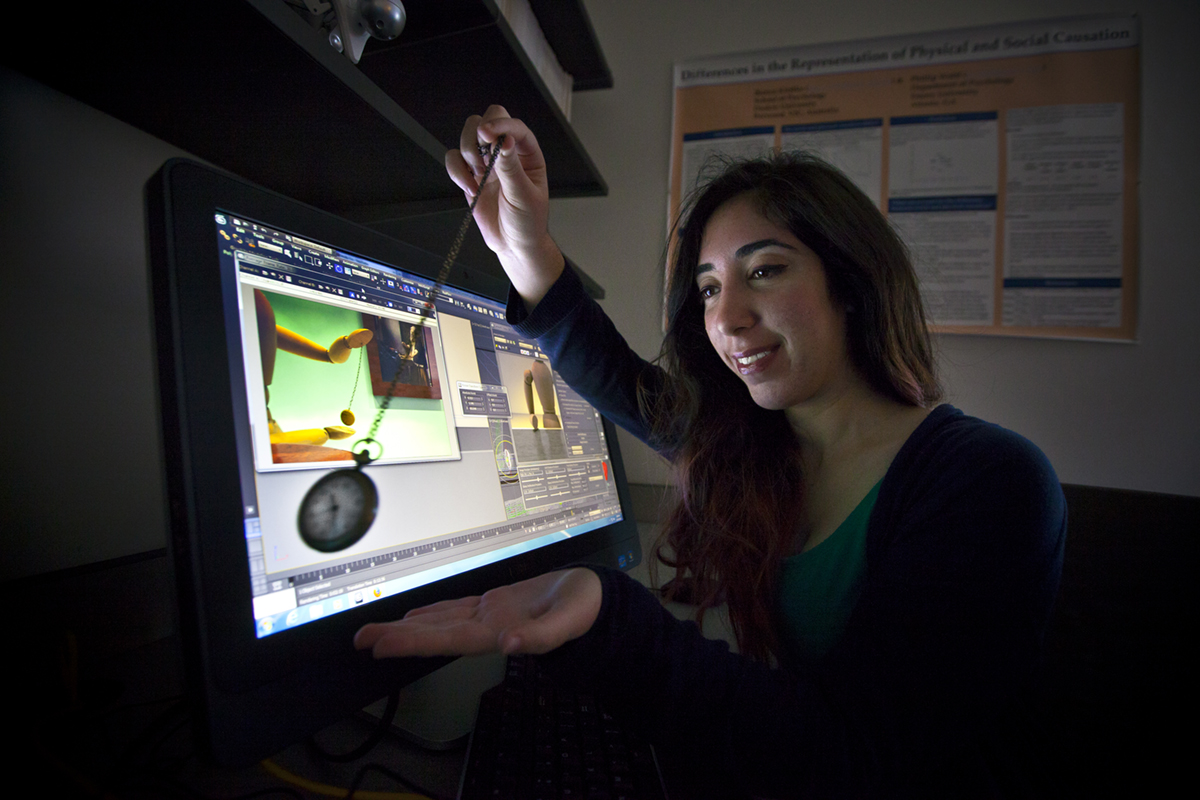
Hadar Naftalovich 14C, psychology major, visual arts minor
Faculty Adviser: Phillip Wolff, associate professor of psychology
Research
Study of causal illusions in Dr. Wolff's Mind and Language Lab; sponsor: SIRE summer program
Reason
I love to learn. At Emory, I am surrounded by a wealth of knowledge inside and outside of the classroom. The exposure to the research being conducted here showed me the opportunity to learn on a deeper level by allowing me to observe some of the discoveries being made and to discover new topics as well. The more I was exposed to it, the more I knew I had to be a part of it.
Results
Imagine that your friend asks you if you got the job you recently interviewed for. You respond that you hope so, and quickly knock on wood to prevent any bad luck that could arise from that statement. Do you truly believe that knocking on wood prevented the bad luck? Causal illusions are situations in which a causal relationship is inferred when there is no possible mechanism to validate that relationship. In order to study the formation and characteristics of causal illusions, we needed to provide participants with situations analogous to real-life scenarios and measure their false cause-effect beliefs. We created two sets of animations, one focusing on a tray filled with water and the other focusing on a watch on a chain. With these animations, we manipulated contact, direction, and motion to create situations where a causal relationship was clearly present (such as a hand hitting a tray with water and a ripple occurring on the same side that the hand made contact on) and ones where the causal relationship was false (such as the hand failing to hit the tray and a ripple still emerging, but from the opposite side from which the hand moved). We predicted that causal illusions are formed when people infer forces, even when the forces are illegitimate. If our hypothesis is correct, the ratings of causation would be strongest when contact, movement, and direction matched and weakest with no movement. Also, if there were sufficient evidence for a causal connection (such as movement) but no mechanism to validate that connection (no contact) there will be a stronger rating of causation when direction matched. Our results supported our hypothesis for both sets of animations.
Rewards
Through my research I hope to better understand the processes that allow causal illusions to form and find ways to apply that knowledge to preventing these illusions from getting out of hand, as can sometimes occur in people with paranoia, obsessive-compulsive disorder, or depression. My favorite part about doing this research is that I am able to use my art skills to advance my knowledge of psychology and use my pursuit of knowledge in psychology to advance my art skills.
Real Life
The idea that I would be creating animations with professional software used to create video games, not for my art class, but for research in a lab, is an amazing one that Emory has made it possible for me to pursue. I believe that had I attended a different university, there is a good chance I would never have discovered the possibility of combining art and psychology in such a seamless way.
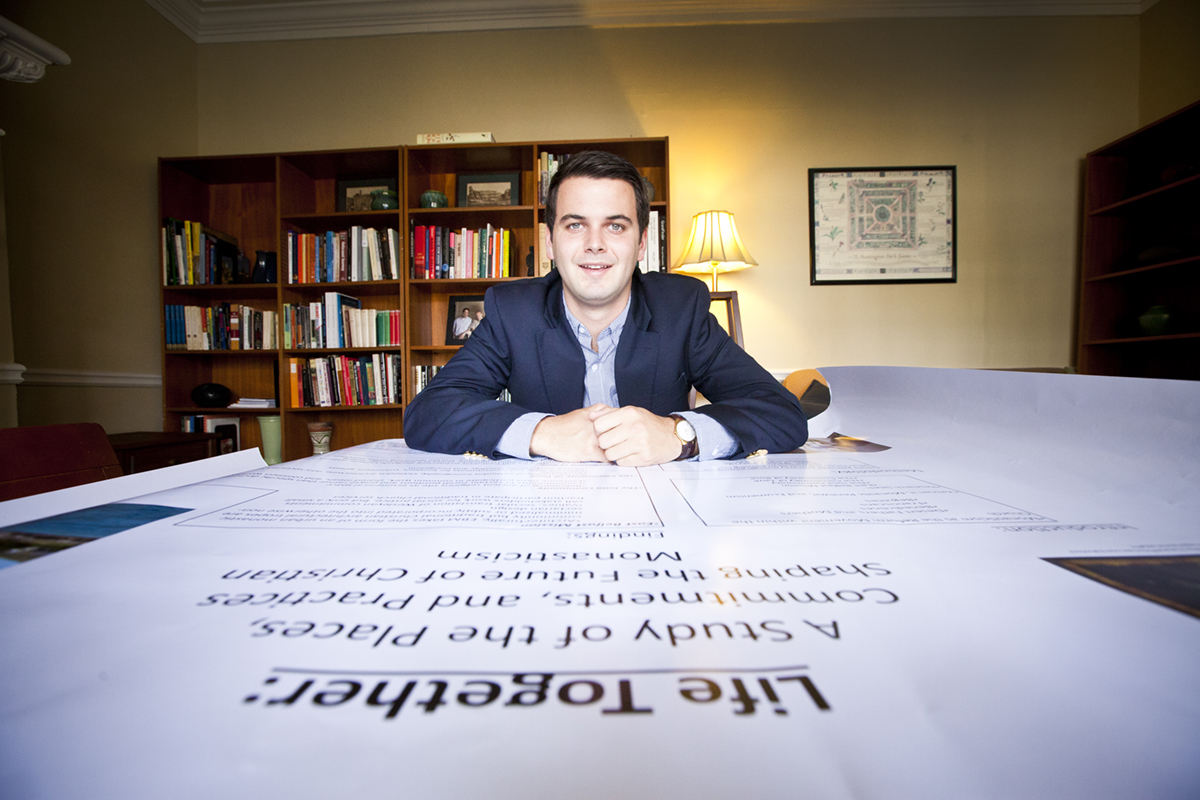
Blake Mayes 14c, religion major
Faculty Adviser: Bobbi Patterson, professor of pedagogy, Department of Religion
Research
The future of Christian monasteries; sponsor: SIRE grant
Reason
Having studied the Christian monastic tradition at Emory, I wanted to experience firsthand the ways the tradition was changing and adapting to modern life. I set out to study the rituals, sacred spaces, and rules of life at four Christian monasteries in Western Europe, analyzing the ways that they have adapted traditional beliefs and practices in secularizing Europe.
Results
The four communities researched place a focus on shared practices rather than shared beliefs, allowing diverse theological beliefs to coexist. This focus on common work for justice rather than traditional focuses on doctrinal commitments would signal a fundamental shift in the definition of insiders and outsiders in religious communities. I hope the research will highlight the innovative ways monasteries are adjusting to modern life and welcoming those who do not share their Christian beliefs.
Rewards
My favorite part was getting to live at the places I was researching, which wouldn't have been possible without the Emory SIRE Summer Research Grant. I was able to live and work alongside monks in all four communities, getting a firsthand experience of their common life in ways I never imagined before I came to Emory.
Real Life
To study the ways East Belfast Mission was seeking to provide healthy food to a low-income community, I worked in their cafe for several weeks, interviewing former paramilitary leaders and local residents about the ways the political climate had changed in the neighborhood because of the work of the mission.
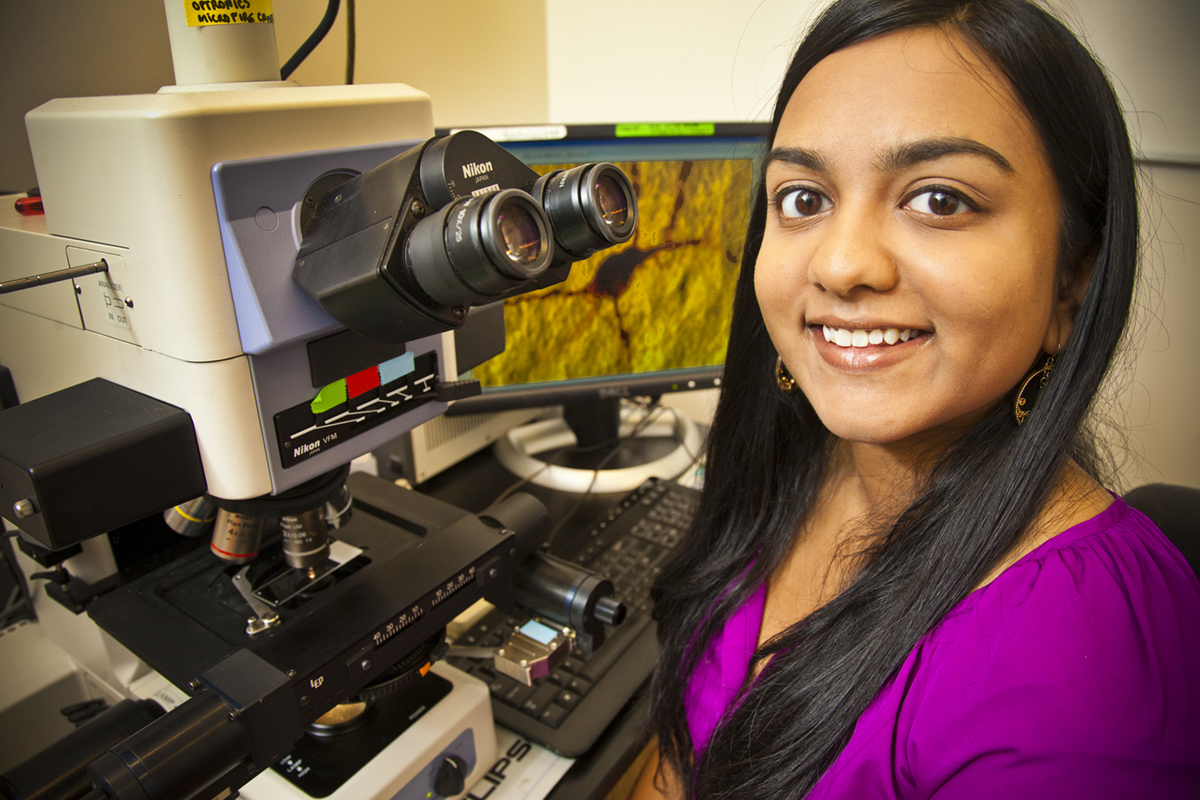
Bhavya Paranthaman 17C, neuroscience and behavioral biology major
Faculty Adviser: Marie-Claude Perreault, assistant professor of physiology, School of Medicine
Research
Neuroscience project in the Department of Physiology in the School of Medicine; sponsor: SIRE (now serves as a research partner)
Reason
I've always been interested in pursuing a career in the medical field, and through the SIRE program I have noticed the key role research and development plays at Emory; any advancement in research can directly make a positive impact on society.
Results
The goal of my research is to create successful three-dimensional reconstructions of the morphology of various types of neurons in the mouse spinal cord.
Rewards
My favorite part about doing neuroscience research is following the process of how the research being done at Emory's School of Medicine can be translated into solutions for current medical conditions.
Real Life
Initially when working in the lab, I was overwhelmed with the amount of new information given to me and was intimidated by the doctors and graduate students who were more experienced than me. I had a memorable moment when I had asked a question of the postdoctoral fellow working with me. She simply told me that she did not know the answer to my question and proceeded to figure it out. In that instant, I realized that researchers, whether a freshman undergraduate student or a postdoctoral fellow, are always solving problems or learning something new. This moment shed light on the fact that through research, individuals will never stop learning, which I find extremely exciting.



